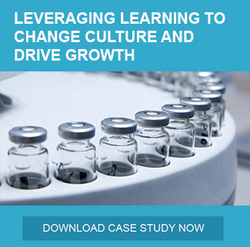There’s no denying that changes in the world economy are having an effect on every industry. And the Life Sciences industry is feeling the effect like everybody else. As budgets for learning and development get battered from all sides, the savviest Life Sciences learning organizations have realized a simple truth: it isn’t about doing more with less, it’s about fundamentally rethinking the way learning and development gets done.
Stott & Mesch, 2015
PDG’s Ann Stott and Rich Mesch recently published an article in Focus Magazine, the journal of the Life Sciences Training & Educators Network. Titled Learning in Changing Times: 5 Trends in Life Sciences Learning, the article focuses on how changes in the Life Sciences industry are changing the requirements of an effective learning function. The learning trends covered include:
-
A Return to Shared Services
-
Demand Planning and Flexible Learning Resources
-
Building Long-Term Sales Team Success
-
Increased Focus on Informal Learning
Click here to read the article for free online. For more insight into the changing world of Life Sciences learning, read Ann Stott’s series on The Changing Face of Life Science Product Launch:
The Changing Face of Life Science Product Launch
The Changing Face of Life Science Product Launch, Part 2: The Launch Toolkit
The Changing Face of Life Science Product Launch, Part 3: The Role of the Learning Team

Ann Stott is the Vice President, Global Accounts at Performance Development Group. She leads the life sciences practices, focusing on pharmaceuticals, health care, biotechnology, and medical devices. Her extensive consulting experience is used to grow the PDG advisory services capabilities. Ann is an accomplished, respected, and energetic leader with more than twenty years of experience in the corporate training environment.

Rich Mesch is Vice President, Customer Engagement at Performance Development Group. A frequent contributor to industry events and publications, his most recent article was Taming the Learning Demand Curve: Using Supply Chain Methods to Manage Your Learning Function for Training Industry's online magazine.
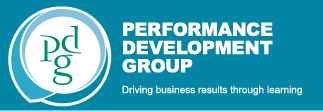
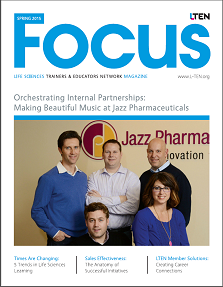
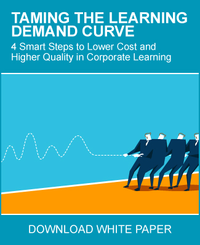
 This is the first of a series of stories about PDG partners who have demonstrated strong and unique leadership in driving business results through learning. Leah Minthorn is the Director of North American (NA) Operations Learning at Iron Mountain, where she has been instrumental in driving organizational change. She and her small team of 11 learning and development staff are consistently reaching strategic business goals through innovative programs. Leah shares how she and her team continue to support the business goals and drive change at Iron Mountain.
This is the first of a series of stories about PDG partners who have demonstrated strong and unique leadership in driving business results through learning. Leah Minthorn is the Director of North American (NA) Operations Learning at Iron Mountain, where she has been instrumental in driving organizational change. She and her small team of 11 learning and development staff are consistently reaching strategic business goals through innovative programs. Leah shares how she and her team continue to support the business goals and drive change at Iron Mountain.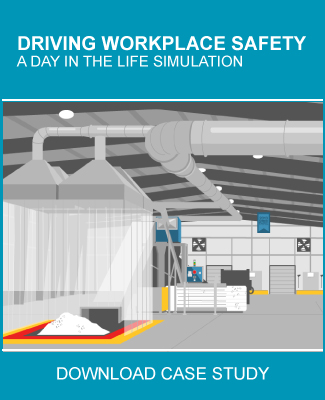
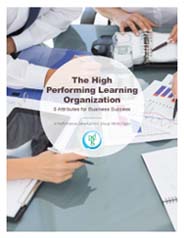 PDG recently published a new white paper called
PDG recently published a new white paper called 
 In the first part of this series, we talked about the role of the individual in learning. It’s hard to make someone learn if they’re not willing. But what if they are willing but are not encouraged or worse are discouraged by the person who judges their performance: their manager? What is the manager’ attitude toward the new knowledge and skills learned?
In the first part of this series, we talked about the role of the individual in learning. It’s hard to make someone learn if they’re not willing. But what if they are willing but are not encouraged or worse are discouraged by the person who judges their performance: their manager? What is the manager’ attitude toward the new knowledge and skills learned? Challenge 1: How does this relate to me? Can you recall a time when you were totally uninterested and unmotivated to learn? Maybe in grade school during history class? For me it was college math. I simply was not interested. Why? I did not ever think calculus was something I would use in “real life.”We know from adult learning principles that people learn best when they can see the relevance the content has to their day-to-day jobs, and to their lives. So, one would think the answer is simple: show people how the content is relevant to them, and they will be open to learning it. As important as this concept is, it’s something designers forget to do as they get all caught up in designing the learning.
Challenge 1: How does this relate to me? Can you recall a time when you were totally uninterested and unmotivated to learn? Maybe in grade school during history class? For me it was college math. I simply was not interested. Why? I did not ever think calculus was something I would use in “real life.”We know from adult learning principles that people learn best when they can see the relevance the content has to their day-to-day jobs, and to their lives. So, one would think the answer is simple: show people how the content is relevant to them, and they will be open to learning it. As important as this concept is, it’s something designers forget to do as they get all caught up in designing the learning.  We have all heard of corporate agility. We hear the term “agile” all the time related to today’s corporate environment: agile processes, agile practices, agile leadership. In our rapidly changing world, agility is one of the most important skills an organization can have if it is to stay competitive. Agility is the ability to move quickly, change rapidly, and respond to crises, threats and opportunities at the point of need. Of course, the ability to be agile relies on the ability of the organization to quickly gain the knowledge they need to do so. Rapid access to knowledge and information drives the learning agile organization, as defined by Clark and Gottfredson in
We have all heard of corporate agility. We hear the term “agile” all the time related to today’s corporate environment: agile processes, agile practices, agile leadership. In our rapidly changing world, agility is one of the most important skills an organization can have if it is to stay competitive. Agility is the ability to move quickly, change rapidly, and respond to crises, threats and opportunities at the point of need. Of course, the ability to be agile relies on the ability of the organization to quickly gain the knowledge they need to do so. Rapid access to knowledge and information drives the learning agile organization, as defined by Clark and Gottfredson in 




